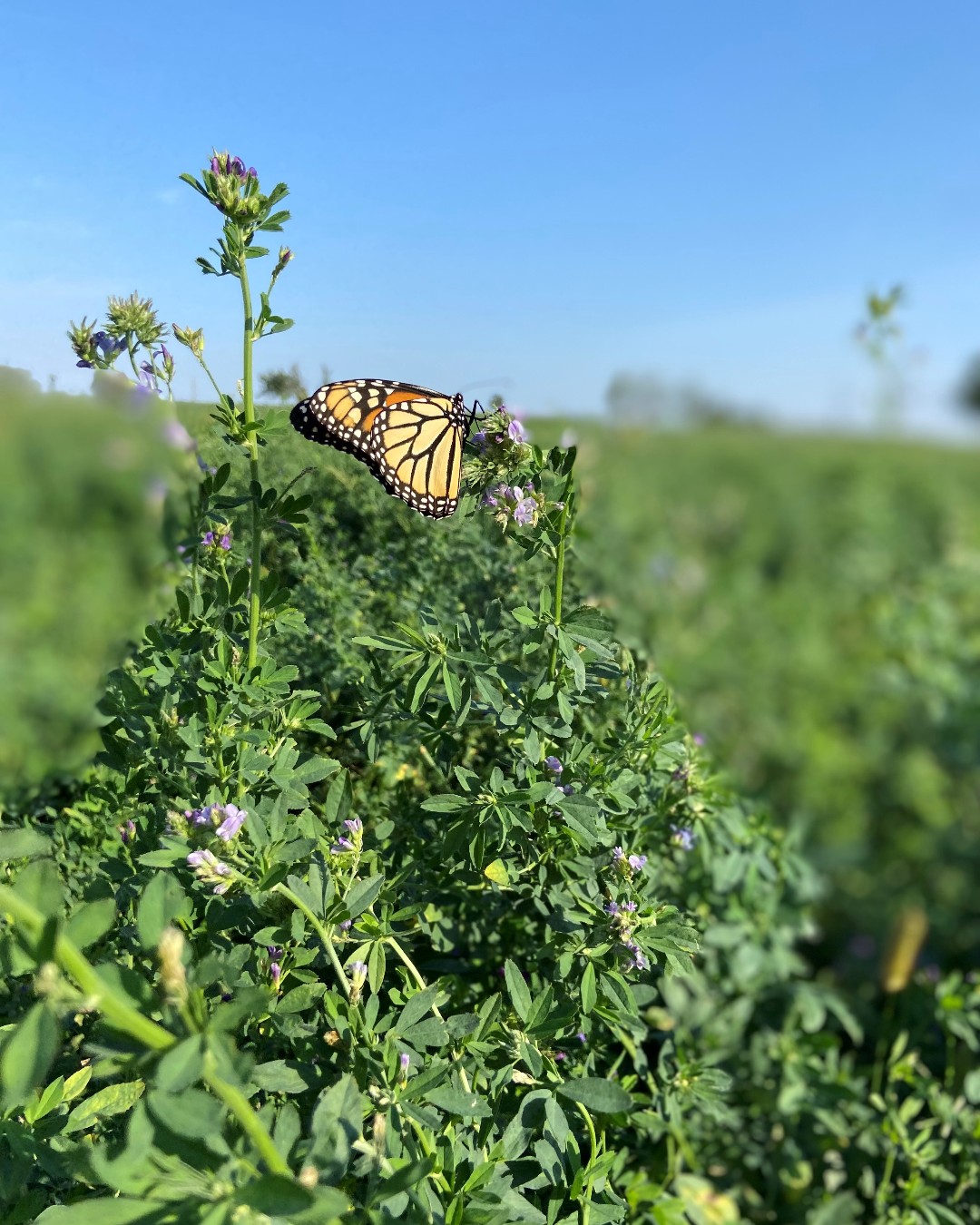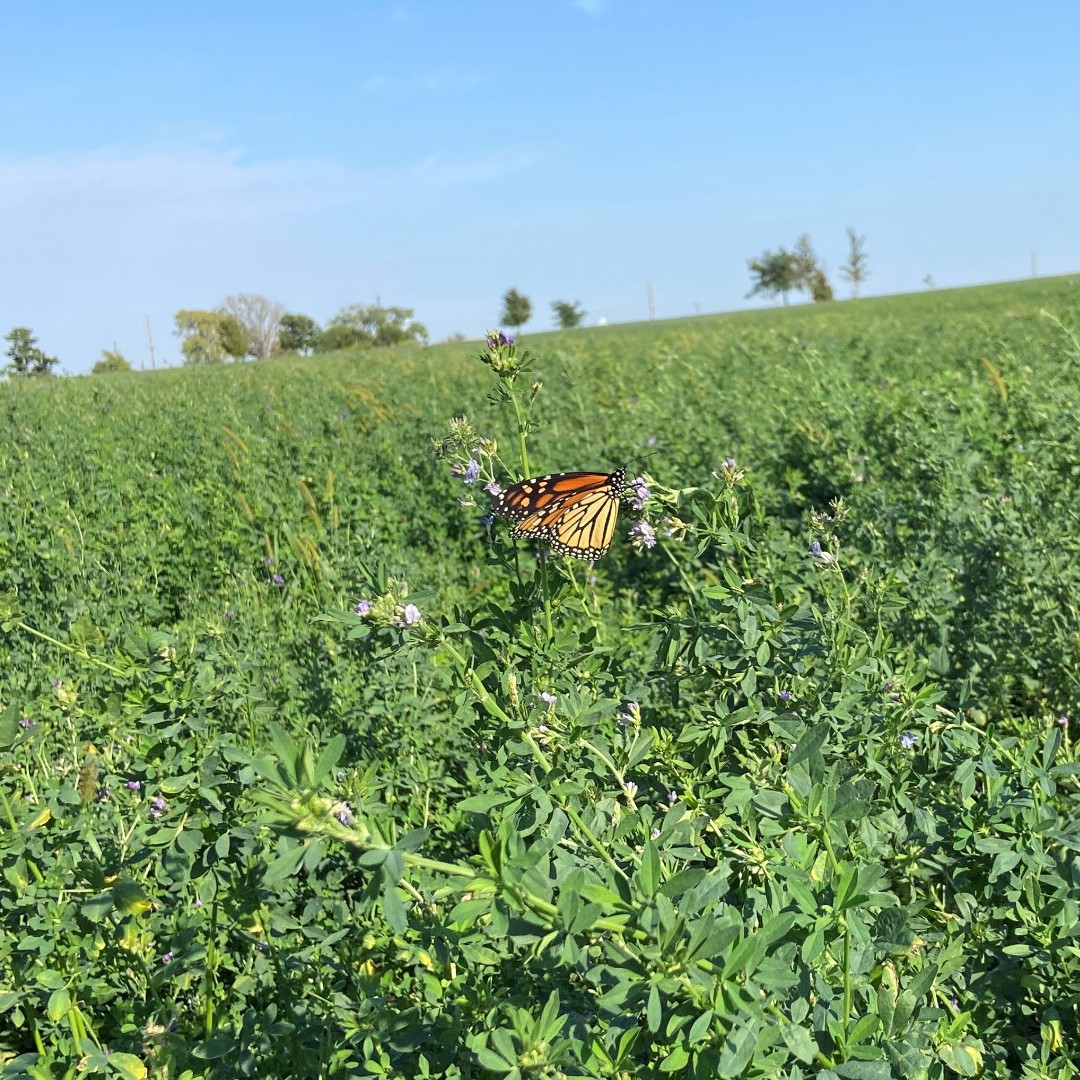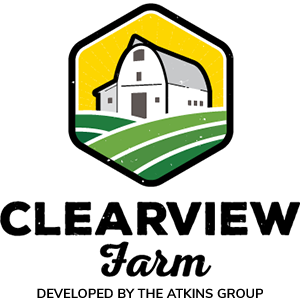Pollinator insects play a crucial role in food supply because they transfer pollen from the follower of one plant to the flower of another plant, which is essential for plant reproduction. Fruits, nuts, and grains are all example products of plant reproduction and rely on pollinators. Experts estimate that one in four bites of food rely on pollinators.
Illinois Pollinators
Butterflies are important pollinators in Illinois, and a diverse part of the state’s ecosystem. These graceful insects flit from flower to flower, transferring pollen and facilitating the reproduction of numerous native plants. While they may not be as prolific as bees in pollination, their presence contributes to the overall biodiversity of Illinois and helps sustain various plant species. Butterflies also add a touch of beauty to the landscape, enhancing the enjoyment of outdoor spaces for residents and visitors alike. Efforts to conserve butterfly habitats are not only beneficial for these delicate creatures but also for the entire ecosystem. Among the most iconic is the striking Monarch butterfly, which migrates through the state during its annual journey. llinois alsos a wide range of other species, such as the Eastern Tiger Swallowtail, Painted Lady, and Red Admiral.
Bees are indispensable pollinators in Illinois, playing a crucial role in the state’s agricultural landscape and biodiversity. They are responsible for pollinating a wide variety of crops, from apples to soybeans, ensuring bountiful harvests and supporting the state’s agricultural economy. In addition to their role in agriculture, bees also contribute to the reproduction of native plants, fostering healthy ecosystems and sustaining diverse wildlife. Illinois is home to numerous bee species, including honeybees, bumblebees, and solitary bees, each with its own unique pollination preferences. Conservation efforts aimed at protecting bee populations are essential to ensuring a thriving environment in the Prairie State.
Moths, while often overshadowed by their more glamorous butterfly counterparts, are an essential and diverse component that play a significant role in Illinois’ nocturnal ecosystems. The state boasts a remarkable variety of moth species, ranging from the subtly patterned to the intricately designed. Among the noteworthy species found in Illinois is the Luna Moth, celebrated for its ethereal green wings and moon-like markings, and the Polyphemus Moth, with its eye-catching, large wingspan. These nocturnal insects, drawn to the night-blooming flowers and various plant species, are vital in ensuring the reproduction of native flora and supporting the biodiversity of Illinois. Their role as pollinators underscores the importance of preserving not only the daytime habitats but also the nighttime environments that these essential creatures rely on for sustenance and reproduction.
Flies, though often underestimated as pollinators, have their own important role in Illinois’ ecosystem. While not as efficient as bees or butterflies, certain fly species, like syrphid flies or hoverflies, can transfer pollen between flowers as they feed on nectar and pollen. They contribute to the pollination of various plant species, particularly those with less showy or inconspicuous flowers. In Illinois, flies play a part in supporting the state’s biodiversity by assisting in the reproduction of native plants and helping maintain a balanced ecosystem. Their contribution, though less celebrated than other pollinators, underscores the intricate web of life in Illinois’ natural world.
While Wasps are not primarily known for their role as pollinators, some species do inadvertently contribute to pollination. Unlike bees, which intentionally collect pollen to feed their larvae, wasps generally visit flowers for nectar, and as they do so, they can transfer pollen from one flower to another. This incidental pollination, though less efficient than that of bees or butterflies, still plays a minor but significant part in supporting the reproduction of many plant species in the state. In Illinois, the diverse array of wasp species, including the Eastern Yellowjacket and the Paper Wasp, adds to the complexity of the local ecosystem, showcasing nature’s intricacies even within seemingly unconventional pollinators.
Central Illinois is home to several types of Beetles that play a role in pollination, albeit less recognized than bees or butterflies. One such example is the native Bessbug, or Horned Passalus, which feeds on decaying wood and inadvertently carries pollen between flowers while foraging. Ground beetles, like the Fiery Searcher, can also contribute to pollination as they move about in search of prey, and Ladybugs visit flowers and transfer pollen as they feed on aphids and other garden pests. While beetles are not as efficient or specialized as other pollinators, their presence adds to the mosaic of pollination dynamics in Central Illinois, showcasing the region’s biodiversity and the intricate relationships between insects and plants.





